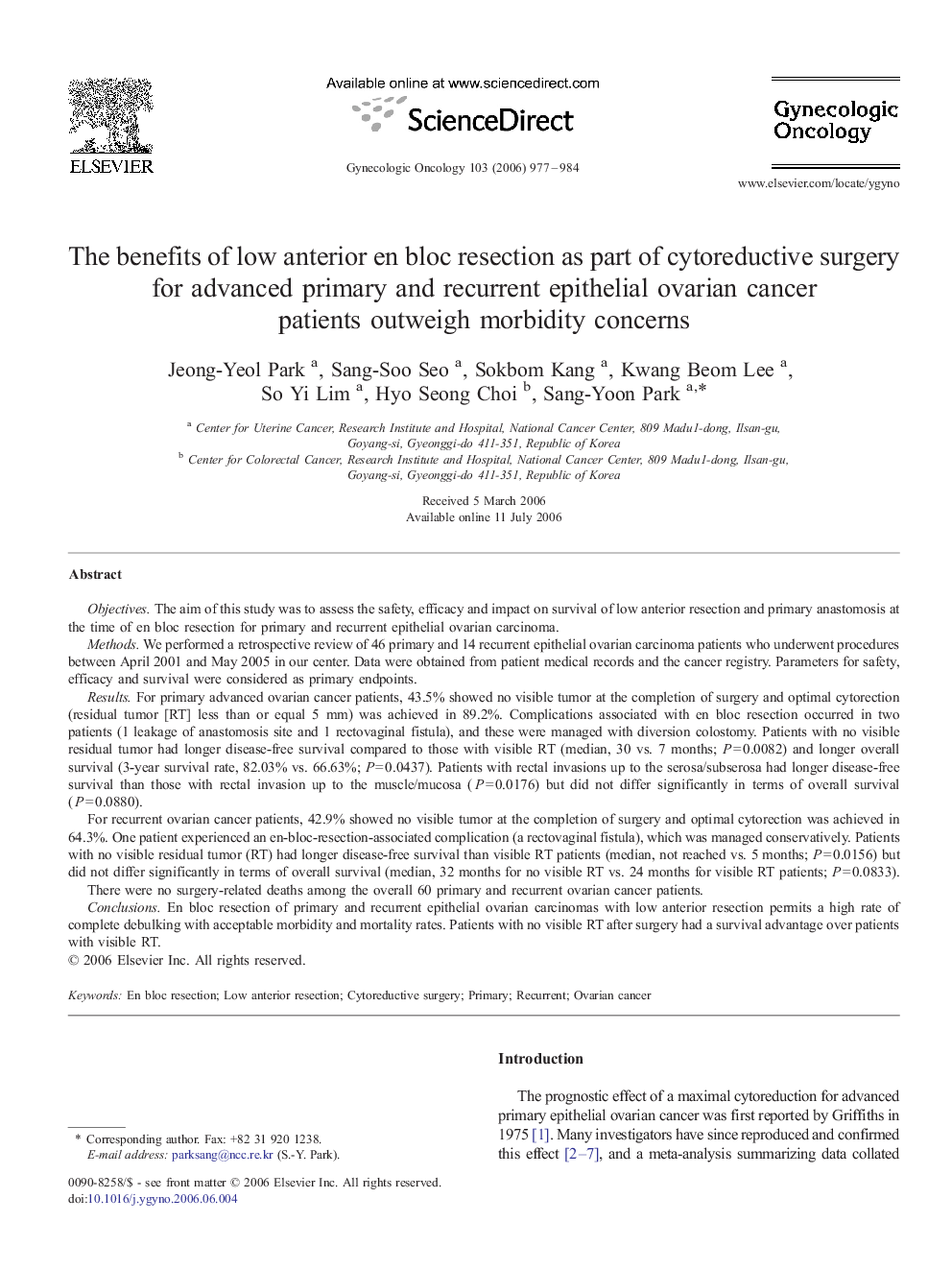| Article ID | Journal | Published Year | Pages | File Type |
|---|---|---|---|---|
| 3943655 | Gynecologic Oncology | 2006 | 8 Pages |
Objectives.The aim of this study was to assess the safety, efficacy and impact on survival of low anterior resection and primary anastomosis at the time of en bloc resection for primary and recurrent epithelial ovarian carcinoma.Methods.We performed a retrospective review of 46 primary and 14 recurrent epithelial ovarian carcinoma patients who underwent procedures between April 2001 and May 2005 in our center. Data were obtained from patient medical records and the cancer registry. Parameters for safety, efficacy and survival were considered as primary endpoints.Results.For primary advanced ovarian cancer patients, 43.5% showed no visible tumor at the completion of surgery and optimal cytorection (residual tumor [RT] less than or equal 5 mm) was achieved in 89.2%. Complications associated with en bloc resection occurred in two patients (1 leakage of anastomosis site and 1 rectovaginal fistula), and these were managed with diversion colostomy. Patients with no visible residual tumor had longer disease-free survival compared to those with visible RT (median, 30 vs. 7 months; P = 0.0082) and longer overall survival (3-year survival rate, 82.03% vs. 66.63%; P = 0.0437). Patients with rectal invasions up to the serosa/subserosa had longer disease-free survival than those with rectal invasion up to the muscle/mucosa (P = 0.0176) but did not differ significantly in terms of overall survival (P = 0.0880).For recurrent ovarian cancer patients, 42.9% showed no visible tumor at the completion of surgery and optimal cytorection was achieved in 64.3%. One patient experienced an en-bloc-resection-associated complication (a rectovaginal fistula), which was managed conservatively. Patients with no visible residual tumor (RT) had longer disease-free survival than visible RT patients (median, not reached vs. 5 months; P = 0.0156) but did not differ significantly in terms of overall survival (median, 32 months for no visible RT vs. 24 months for visible RT patients; P = 0.0833).There were no surgery-related deaths among the overall 60 primary and recurrent ovarian cancer patients.Conclusions.En bloc resection of primary and recurrent epithelial ovarian carcinomas with low anterior resection permits a high rate of complete debulking with acceptable morbidity and mortality rates. Patients with no visible RT after surgery had a survival advantage over patients with visible RT.
